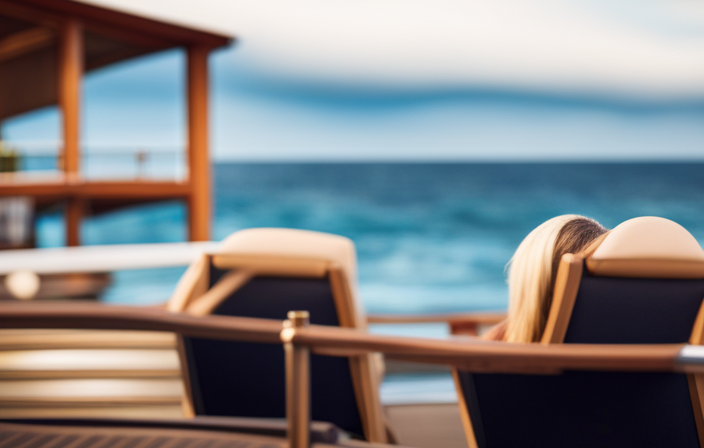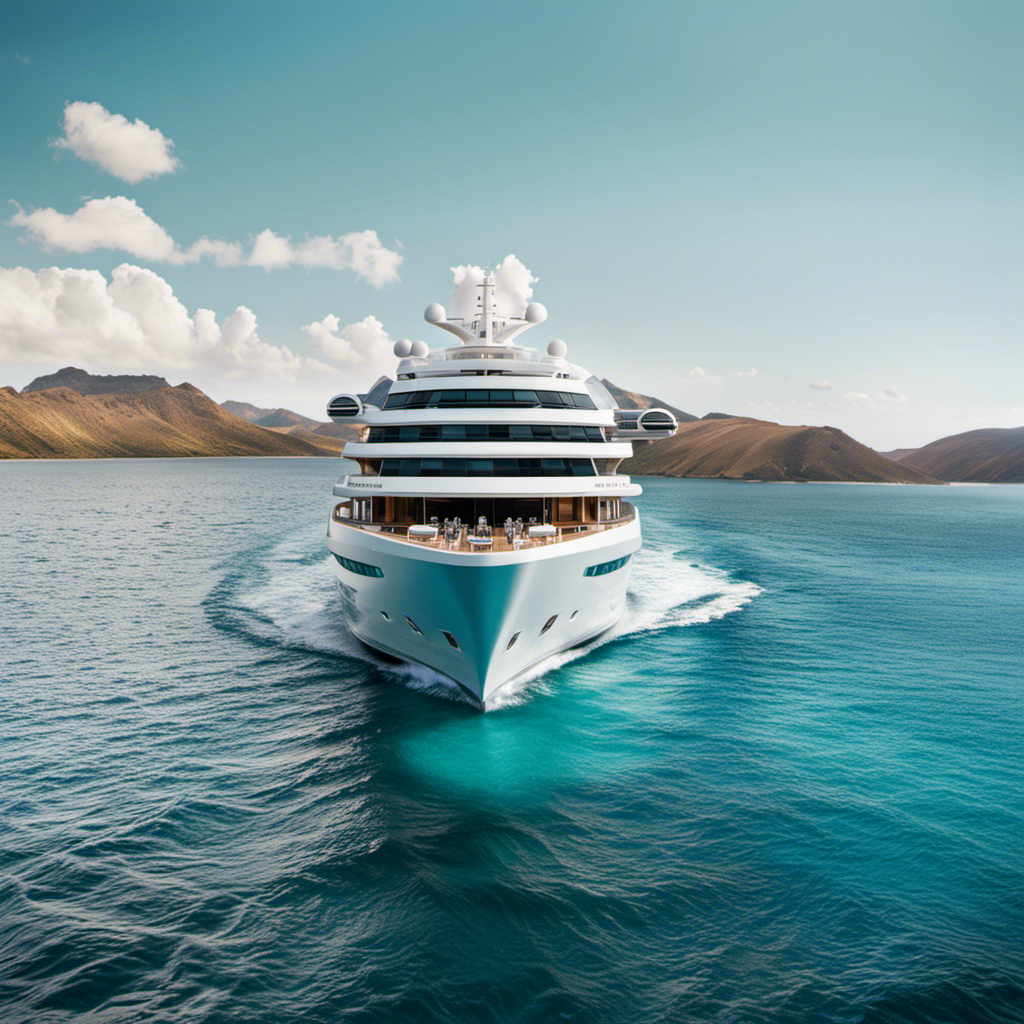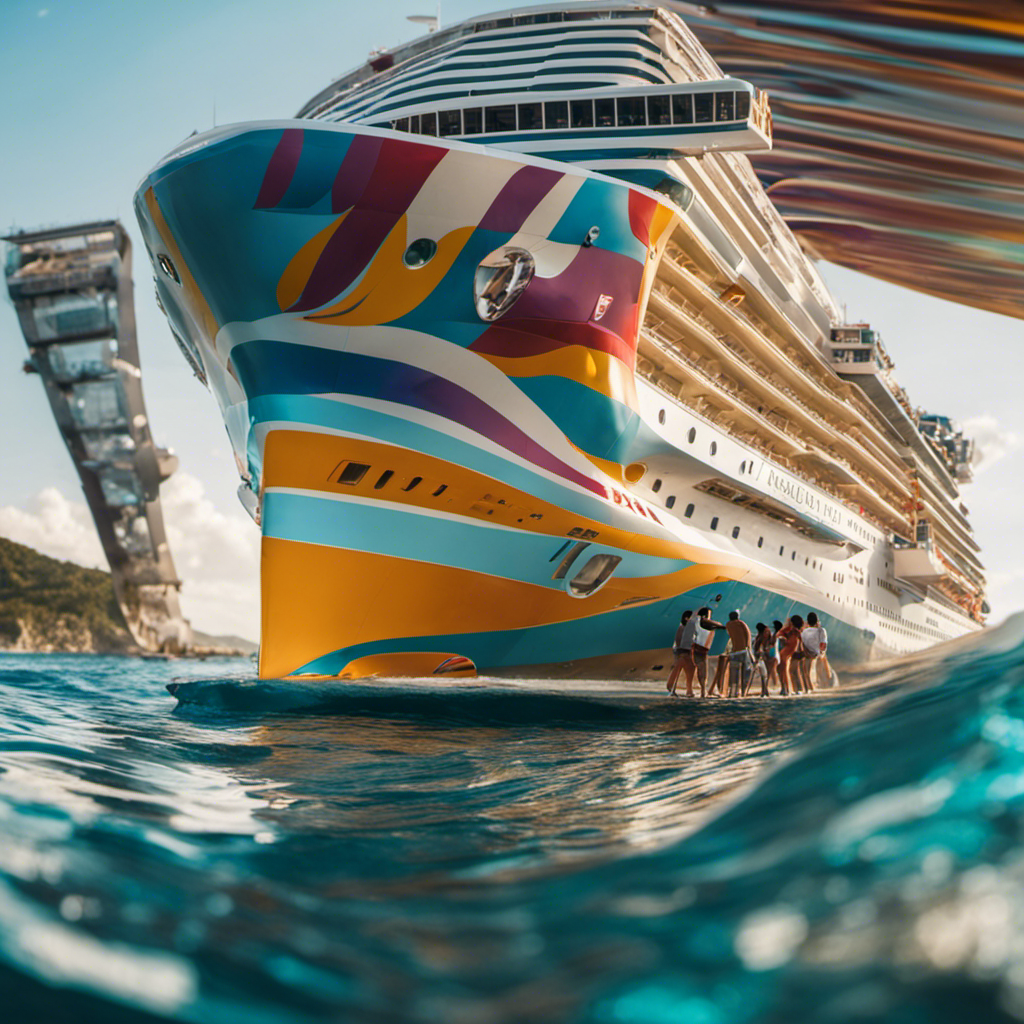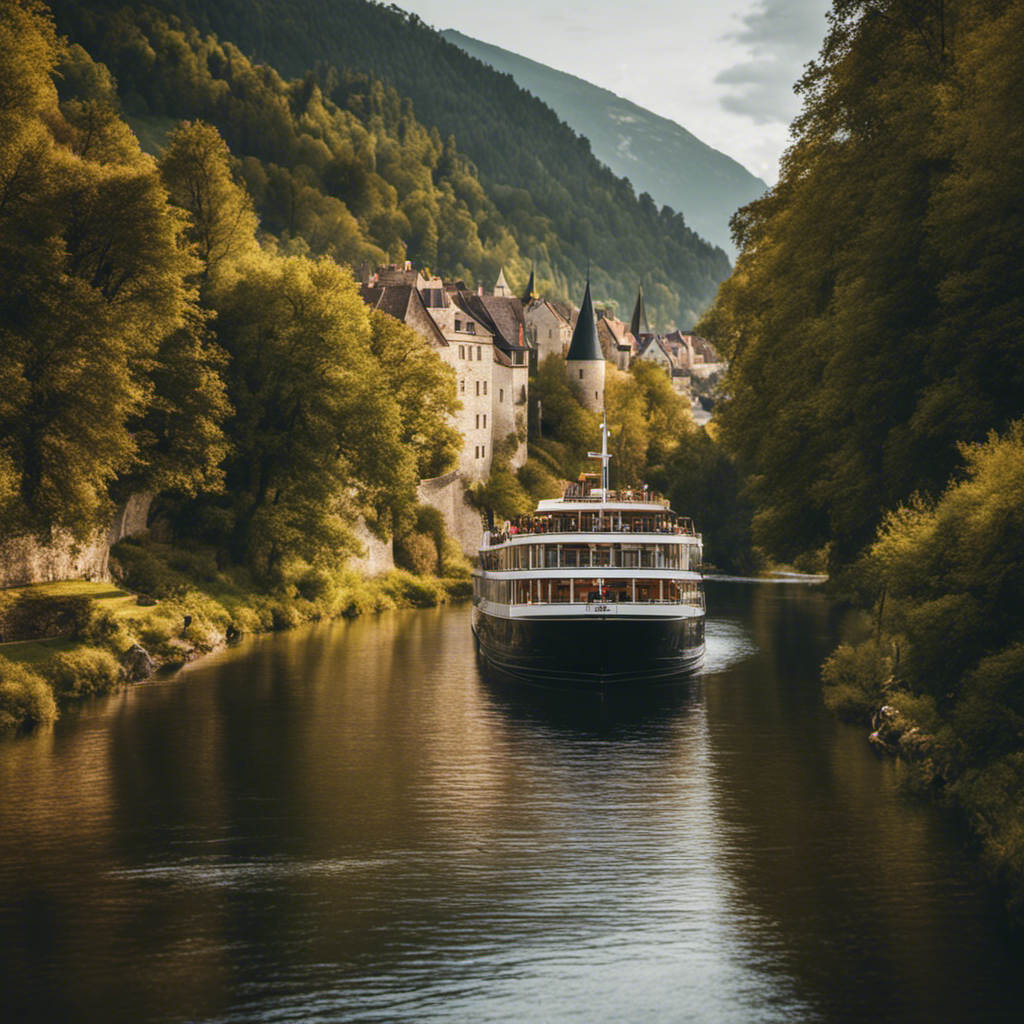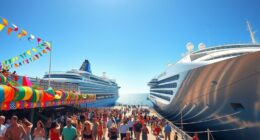Imagine stepping onto a cruise ship, ready for a new adventure. The thrill is palpable as you set sail, eager to explore unknown territories and immerse yourself in different cultures. But, what if I shared a little-known fact with you—that cruising can vary significantly depending on the location? European cruises offer a distinctive journey that differs from their North American counterparts, and I’m here to give you all the details.
From the moment you step foot on the ship, you’ll notice the differences. The boarding process is unique, and it’s recommended to arrive a few days early to adjust and avoid any travel mishaps. Once onboard, you’ll encounter a more international crowd, with a mix of languages spoken and announcements made in multiple languages. The buffet and youth club are also less crowded, allowing for a more relaxed experience.
As someone who has experienced both European and USA cruises, I can’t wait to share my personal insights and tips with you. So, buckle up and get ready to discover what sets European cruises apart from the rest.
Key Takeaways
- European cruises offer more port-intensive itineraries, allowing for more time exploring destinations.
- Boarding a European cruise is different from boarding a North American cruise, with recommendations to arrive a few days prior and plan transportation to the terminal.
- European cruises have a more international crowd with diverse languages spoken, and announcements are made in multiple languages.
- The onboard experience on a European cruise may involve waiting for the cabin to be ready, less crowded buffets, and completing muster drills prior to sail away.
European Cruise Experience
I found that European cruises offer a more port-intensive itinerary compared to cruises in the USA, allowing for more time to explore different destinations. European cruise itineraries are filled with exciting ports of call, giving passengers the opportunity to immerse themselves in the rich history and culture of each place.
From the stunning beaches of the Mediterranean to the charming cities along the Baltic Sea, there’s always something new and fascinating to discover.
When it comes to terminal transportation options, planning ahead is crucial. Public transportation can be a cost-effective and convenient choice, especially in foreign countries. It’s important to research and understand the transportation systems in each port to ensure a smooth and enjoyable experience throughout the entire cruise.
Boarding Process
Arriving a few days prior to embarkation is recommended in order to adjust and avoid missing flights when boarding a cruise. Planning transportation to the terminal is crucial, especially in foreign countries. Public transportation can be a cost-effective option.
As I boarded my first European cruise, I noticed some differences in the boarding process compared to North American cruises. The terminal was less crowded, making it easier to navigate. The boarding requirements included passport and boarding document checks, ensuring a smooth and efficient process. One cultural difference I noticed was the more international crowd on the ship, with diverse languages spoken and announcements made in multiple languages. It added a unique and exciting atmosphere.
Although I had to wait for my cabin to be ready upon boarding, the buffet was less crowded due to fewer passengers boarding at once. Overall, the boarding process on a European cruise was organized and allowed for a seamless transition onto the ship.
Onboard Differences
The onboard experience on a European cruise differs from a North American cruise due to the more international crowd and diverse languages spoken. It creates a unique and vibrant atmosphere, adding cultural diversity to the journey.
Here are some key differences that make the experience stand out:
-
Language barriers: With passengers from various countries, announcements are made in multiple languages, making them longer but showcasing the diversity onboard.
-
Cultural diversity: Interacting with people from different backgrounds enriches the experience, allowing for unique conversations and insights.
-
Multicultural cuisine: European cruises often offer a wide range of international cuisines, providing a taste of different cultures.
-
Unique entertainment: The onboard entertainment may feature performances and activities that highlight the cultural diversity of the passengers.
-
Language learning opportunities: Being surrounded by different languages provides a chance to pick up new phrases and learn about different cultures.
The onboard experience on a European cruise truly immerses you in a multicultural adventure, fostering connections and expanding horizons.
Author’s Personal Experience
Experiencing a European cruise was like stepping into a vibrant tapestry of cultures and languages, where every corner of the ship offered a new opportunity for exploration and connection. As a travel enthusiast and aspiring travel writer, it was a dream come true.
After graduating from New York University with a journalism degree, I fell in love with cruising on the Oasis of the Seas. It sparked a passion within me to pursue a career in travel writing. However, during my European cruise, I couldn’t help but have one regret. I wish I had taken a land-based trip in Iceland.
The breathtaking landscapes and unique experiences that Iceland offers would have been the perfect addition to my European adventure. Nonetheless, my European cruise was an unforgettable journey that fueled my love for travel and writing.
Additional Information
During my European cruise, I discovered that luxury cruises can be quite expensive. While the experience was definitely worth it, it’s important to be prepared for the higher cost compared to some USA cruises. European cruises often offer a more luxurious and upscale experience, with top-notch amenities and services that come at a price.
Additionally, one thing that stood out during my European cruise was the language barriers. With a more international crowd, different languages were spoken onboard, making announcements and interactions a bit more challenging. However, the cruise line did a great job accommodating multilingual guests and ensuring everyone felt included. It was a unique aspect of the trip that added to the overall cultural experience.
Despite the cost and language differences, the European cruise was an incredible adventure that I would highly recommend.
What are the main differences between European and USA cruises, and how do the strengths and weaknesses of specific cruise lines compare in each region?
When it comes to European and USA cruises, there are notable differences in terms of cultural experiences and itineraries. European cruises often offer a more diverse range of port stops and immersive cultural experiences, while USA cruises may focus more on entertainment and onboard activities. When conducting a cruise line downsides analysis, it’s important to consider the specific strengths and weaknesses of each cruise line in each region to determine which aligns with your preferences and priorities.
Frequently Asked Questions
What are the main differences in terms of onboard entertainment and activities between European and USA cruises?
Onboard entertainment options on European and USA cruises differ in terms of variety and cultural focus. European cruises offer diverse performances, live music, and themed events that showcase the region’s heritage. USA cruises often emphasize Broadway-style shows and popular American music. Activities and amenities also vary, with European cruises offering more port-intensive itineraries for exploring destinations.
Are there any specific cultural differences that passengers should be aware of when taking a European cruise?
Cultural etiquette on European cruises includes being respectful of local customs and traditions. Language barriers can be overcome by learning basic phrases or using translation apps.
How does the dining experience on a European cruise differ from that on a USA cruise?
The dining experience on a European cruise offers a delightful blend of traditional and fusion cuisine. From exquisite French dishes to tantalizing Mediterranean flavors, every meal is a cultural journey. Plus, don’t miss the themed dining events for an extra special culinary adventure.
Are there any additional costs or fees that passengers should expect on a European cruise that they wouldn’t typically encounter on a USA cruise?
On a European cruise, passengers should expect additional costs or fees that they wouldn’t typically encounter on a USA cruise. These can include fees for shore excursions, specialty dining, and gratuities, which can vary depending on the cruise line and itinerary.
What are some popular European cruise destinations that are not commonly visited on USA cruises?
Some popular European cruise destinations that are not commonly visited on USA cruises include Santorini, Greece; Dubrovnik, Croatia; and Bergen, Norway. These ports offer unique cultural experiences and stunning natural beauty. Additionally, these European ports tend to be less crowded compared to popular USA cruise destinations.


